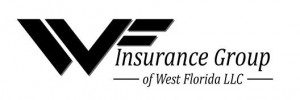Of all the people I speak with on a daily basis, it goes without saying that investors are some of the most educated when it comes to being experts in their professions. Their entrepreneurial lust for knowledge expands far beyond what is necessary for them to carry out their endeavors on a daily basis. However, it does seem that most investors tend to have the same underlying outlook on insurance as every other member of society; give me enough protection without costing me a lot. Unfortunately the lack of information in this area may also cost you additional premiums over the year which may not apply to you particular investment. And when you’re dealing with multiple investments the compounding of these increased premiums may take a serious cut into the profits of your business model. This month I plan on giving a quick explanation of the two most commonly used forms of insurance when it comes to investment properties as well as provide a few examples that are encountered often in the insurance field.
Common policies to cover investment dwellings that can range up to a quad-plex with most carriers are the DP1 and DP3. DP stands for Dwelling Property but is sometimes also referred to as DF short for Dwelling Fire by some carriers. The DP1 or Basic form is typically the cheapest way to get properties covered against major losses. The Special form or DP3 provides more coverages with an as to be expected increased premium cost.
The DP1 provides the basic coverages that most would want on their properties: fire, lightning, internal explosion, and catastrophic ground cover collapse. Most companies will offer additional coverages for wind, smoke, as well as a few other additions through Extended Coverage. However, these are limited in actual coverage. For example, if an awning is blown away in a windstorm, it typically still will not be covered by a DP1 even with the Extended Coverage added onto the policy. This form would be good for someone trying to save money on a relatively new property that does not have many exterior features on the dwelling, while also not having many other trees on a mostly open piece of land.
The DP3 or Special form is slightly more expensive over a yearly basis. This typically costs anywhere from one-hundred fifty to three hundred dollars depending on the property location, square footage, etc. However, with this increased premium also comes a much larger net of perils covered. As a matter of fact, with a DP3, the coverages are not stated in what IS covered, but rather what IS NOT covered. That makes this form great for older houses despite many carriers limiting age on a DP3 covered property. A loss that is covered by DP3 that is quite typical would be some form of sewage backup or bursting of water pipes. This typically will not be covered under most DP1’s, however again if you have trees on your property that may be close to water and sewage lines, it would be a very good decision to go with a DP3 as opposed to a DP1.
As always, you should check with your specific carrier if you have a concern to ensure that the loss would be covered under your specific policy form before placing coverage. Every investment property is slightly different which will require each to be considered differently when looking at an insurance policy. The difference in these simple policy forms should be known by every investor in an effort to help protect you financially right now as well as going on into your future.
By Guest Contributor Kiley Baldauf
Insurance Group of West Florida – 727.230.9804
Michael Monnot
941.518.7138
Mike@infinitybusinessbrokers.com
1910 Park Meadows Drive, Suite 202
Fort Myers, FL 33907




Leave a Reply